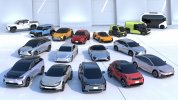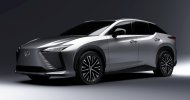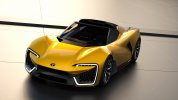So just a year ago hydrogen ICE seemed like a ridiculous idea and this year we saw three hydrogen ICE prototypes (G16, 2UR, 1000cc ROV engine) and another rumored for production (2ZR for Prius). They were able to close the power gap, without using forced induction? And a stoichiometric AFR, without AdBlue injection? How did they solve the NOx issue? Hydrogen ICE is still a ridiculous idea (because of storage) but the engineering that went into these prototypes is still very fascinating.
To me this is a very good opportunity to revive the 1LR. Yamaha please do it!
I think this possibly means Toyota will offer power-optimized hybrids using the standard "low" compression ICE in the future for more product differentiation. For example NX350h and NX450h+ can get another 16PS from the A25-FKS while sacrificing fuel efficiency slightly.
What's also new about the 5th gen THS is significantly larger battery. The new battery is 60s3p with 4.08Ah capacity. Total capacity is thus 3.7x60x3x4.08 = 2.71kWh. The largest hybrid battery ever in a Toyota hybrid.
Unfortunately the low power density nature of PS hybrid still limits total output to just 196PS. If this were the i-MMD or P2 style hybrid this system can easily get 240+PS.
To me this is a very good opportunity to revive the 1LR. Yamaha please do it!
The FWD uses M20-FKS with 13.0:1 compression ratio. The FXS in the AWD is still 113kW.According to the PDF on the European website. The new 2.0 hybrid system, the FWD version engine power has been increased to 171ps. Same with ICE M20 series output. That make system combined output to 197ps
I think this possibly means Toyota will offer power-optimized hybrids using the standard "low" compression ICE in the future for more product differentiation. For example NX350h and NX450h+ can get another 16PS from the A25-FKS while sacrificing fuel efficiency slightly.
What's also new about the 5th gen THS is significantly larger battery. The new battery is 60s3p with 4.08Ah capacity. Total capacity is thus 3.7x60x3x4.08 = 2.71kWh. The largest hybrid battery ever in a Toyota hybrid.
Unfortunately the low power density nature of PS hybrid still limits total output to just 196PS. If this were the i-MMD or P2 style hybrid this system can easily get 240+PS.
























